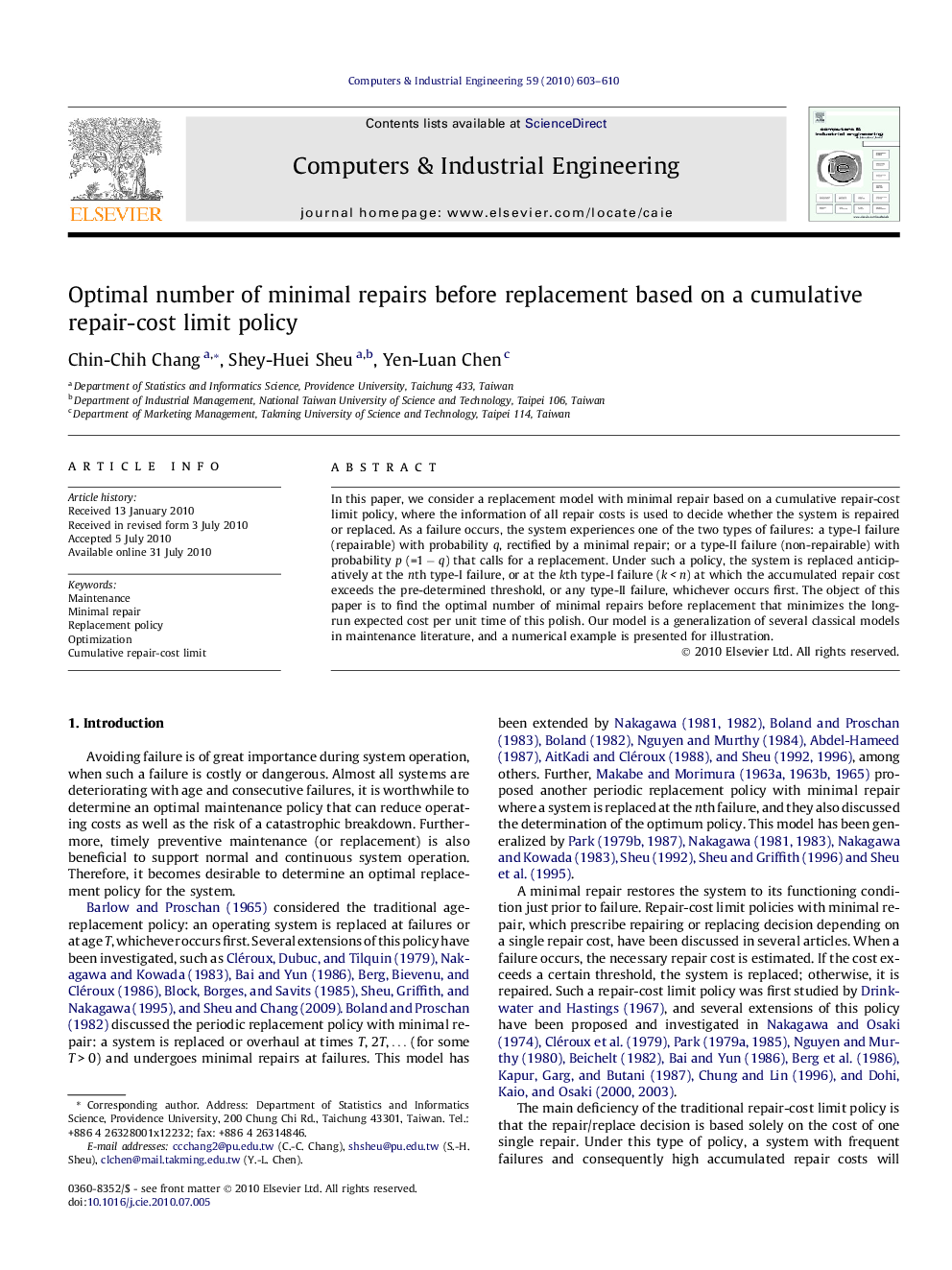| Article ID | Journal | Published Year | Pages | File Type |
|---|---|---|---|---|
| 1134709 | Computers & Industrial Engineering | 2010 | 8 Pages |
In this paper, we consider a replacement model with minimal repair based on a cumulative repair-cost limit policy, where the information of all repair costs is used to decide whether the system is repaired or replaced. As a failure occurs, the system experiences one of the two types of failures: a type-I failure (repairable) with probability q, rectified by a minimal repair; or a type-II failure (non-repairable) with probability p (=1 − q) that calls for a replacement. Under such a policy, the system is replaced anticipatively at the nth type-I failure, or at the kth type-I failure (k < n) at which the accumulated repair cost exceeds the pre-determined threshold, or any type-II failure, whichever occurs first. The object of this paper is to find the optimal number of minimal repairs before replacement that minimizes the long-run expected cost per unit time of this polish. Our model is a generalization of several classical models in maintenance literature, and a numerical example is presented for illustration.
